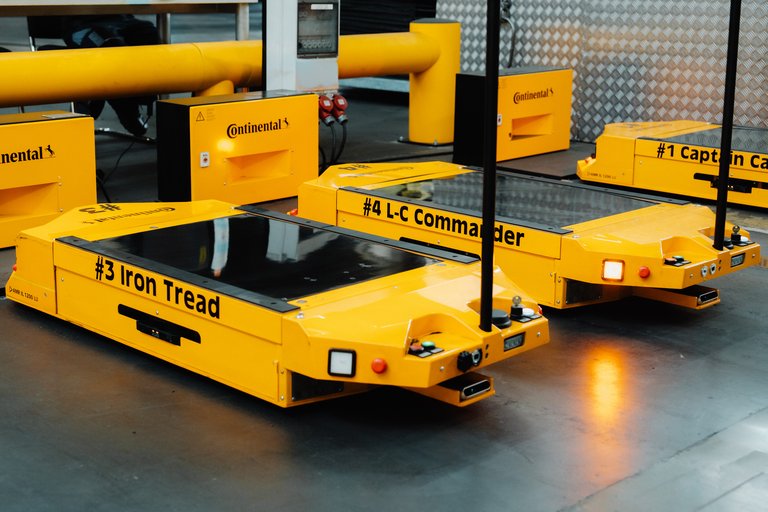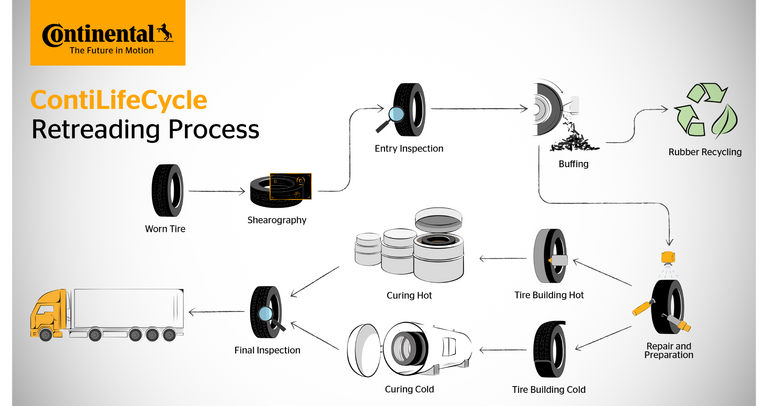Keeping Things Moving: Continental Optimizes Tire Production with Autonomous Robots
- At Continental’s ContiLifeCycle plant in Hanover-Stöcken, autonomous mobile robots (AMRs) have been handling in-plant transport of tires since March 2025
- “Transport robots are a valuable addition to our daily operations and help create a safe, efficient and ergonomically optimized production environment,” said Felix Hantelmann, head of the ContiLifeCycle plant
- Intelligent automation supports the transition to Industry 4.0; robotic solutions are in use at Continental tire plants worldwide
Hanover, Germany, November 18, 2025. At Continental’s ContiLifeCycle (CLC) retreading plant for truck and bus tires in Hanover-Stöcken, seven autonomous mobile robots (AMRs) have been keeping things moving since March 2025. Their job: transporting green tires around the plant, freeing up employees for more skilled tasks such as machine setup and quality control. By successfully integrating smart automation, Continental is making manual production processes more ergonomic while further boosting efficiency in tire manufacturing – a key step toward future-ready Industry 4.0.
“Self-driving robots have been supporting our production workflow for six months now,” said Felix Hantelmann, head of the ContiLifeCycle plant. “They handle simple, repetitive transport tasks such as moving a tire from one point to another. The robots are directly connected to our digital order system, so they know exactly where to go and how to coordinate with each other to get there. They are a valuable addition to our daily operations and help create a safe, efficient and ergonomically optimized production environment.”
More time for quality: autonomous robots streamline tire production
The robots navigate independently and safely through the production hall using advanced sensors, 360-degree camera systems and AI-based control technology. At speeds of up to two meters per second – roughly the pace of a brisk walk – they transport tires between stations in the retreading process: from the tire-building machine to the curing presses and on to quality control.
The new hot-retreading workflow is as follows:
- A handling robot transfers the buffed tire carcass to the tire-building machine, where – depending on tire size – it is fitted with up to 18 kilograms of fresh rubber heated to about 100°C for the tread and sidewalls.
- Once the tread and sidewall have been applied, the handling robot places the tire on a transport trolley. An autonomous mobile robot, connected to the digital order system, then moves the trolley either to the curing press or to an intermediate storage area, depending on capacity.
- In the curing press, the roughly 75-kilogram tire is vulcanized at 160°C, giving it its final shape and tread pattern. It is then transferred via a conveyor belt to quality control.
The advantages of mobile transport robots are clear: “Our employees no longer have to move tires across the hall, which means less physical strain for them. Instead, they can focus on more demanding tasks like machine operation and quality control,” says Hantelmann. Before the robots were introduced, employees transported tires manually using cranes and trolleys that weighed up to 250 kilograms when loaded with two tires. This required multiple manual steps and trips between stations.
Technology with team spirit: employees helping to drive change
Continental supported the rollout with a comprehensive training program, which helped to boost acceptance among the workforce. Employees were even involved in choosing the robots’ names like Cargo Knight, Rubber Ranger and LifeCycle Commander. Six months later, the robots are an integral part of the team.
The use of autonomous mobile robots is a prime example of how Continental is leveraging digitalization and automation to make tire production more efficient and sustainable. And the success speaks for itself: similar solutions have been introduced at other Continental tire plants worldwide. These include locations such as Mount Vernon and Clinton in North America, Púchov and Otrokovice in Europe, and Hefei and Rayong in Asia.
More than one million retreaded tires from the ContiLifeCycle plant in Hanover
The CLC plant has been retreading worn truck and bus tires since 2013. The used tires are first thoroughly inspected and stripped of their old tread. They then receive a new tread, are vulcanized to give them a new profile and finally undergo quality and safety checks. This process allows up to 70 percent of the original tire to be reused. The result is a product that matches a new tire in terms of safety and performance – while using significantly fewer resources. Since the plant in Hanover opened, Continental has retreaded more than one million tires there. Including other retreading plants worldwide, the company has produced around eight million retreaded truck and bus tires.

Katharina Bühmann
Technology, Innovation & Original Equipment
Manager Global Communications
Continental Tires

Henry Schniewind
Head of Global External Communications
Continental Tires




